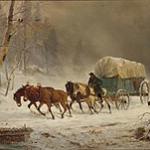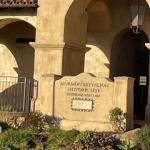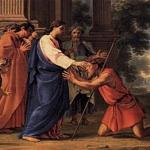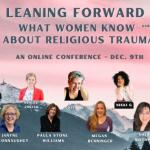 Christmas is a time of lights. Retailers, charities, civic groups, families, and churches display lights to catch attention and share their message with the public, whether it is an opportunity to join in helping those less fortunate, a “perfect gift” for grandma, something attractive to contribute to local festivities, or something striking or humorous to share a family’s fun. These secular lights are entertaining, but they haven’t changed lives. Miracles of lights in the skies changed lives as they told all who could see that Jesus Christ, the light and life of the world, was born.
Christmas is a time of lights. Retailers, charities, civic groups, families, and churches display lights to catch attention and share their message with the public, whether it is an opportunity to join in helping those less fortunate, a “perfect gift” for grandma, something attractive to contribute to local festivities, or something striking or humorous to share a family’s fun. These secular lights are entertaining, but they haven’t changed lives. Miracles of lights in the skies changed lives as they told all who could see that Jesus Christ, the light and life of the world, was born.
A Night Without Darkness
Russell M. Nelson taught, “At the birth of Him who called Himself the ‘light of the world,’ darkness was banished worldwide as a sign of His holy birth.”[1]
Miracles of lights in the sky saved the lives of faithful Nephites and Lamanites. Samuel, a Lamanite prophet, had prophesied that in five years,
There shall be one day and a night and a day, as if it were one day and there were no night; and this shall be unto you for a sign; for ye shall know of the rising of the sun and also of its setting . . . [but] the night shall not be darkened; and it shall be the night before [Christ] is born. (Helaman 14:4)Samuel predicted other miracles, including a star unlike any humans had ever seen.
As the fifth year was approaching, unbelievers set a date on which believers would die if the sign had not been given. The night before that fateful day, the day, night, and day with full shining daylight arrived, with other miracles of lights, including the star.
John A. Tvedtnes, a specialist in ancient Near Eastern studies, reported that traditions of the early Christians mention a day of unnatural light motion. He quoted a letter written in approximately A.D. 100 to the Ephesians by Ignatius, a Christian writer, Patriarch, and martyr.
How then was our Saviour manifested to the world? A star shone in heaven beyond all the other stars, and its light was inexpressible, and its novelty struck terror into men’s minds. All the rest of the stars, together with the sun and moon, were the chorus to this star; but that sent out its light exceedingly above them all. [2]
A Worldwide Star
Every account of the Savior’s birth known to most of us includes the magnificent star. It was among the lights viewed in America. As Samuel the prophet knew, the wise men half a world away also knew the sign of the Lord’s birth, and they watched the skies eagerly. They rejoiced and assembled gifts as soon as they saw it.
At the time of Christ’s birth, people spontaneously looked at the sky when the sun had set. God sent the star, a particularly striking emotive symbol, to share the joy of His Son’s coming. The star reached an overwhelming number of people without delay. As the Savior himself proclaimed: “I am the light of the world: he that followeth me shall not walk in darkness, but shall have the light of life” (John 8:12). The star was perhaps the most prominent symbol (representation) of Christ’s work and glory as well as of the fact of His mortal birth.
A Call to Shepherds and Sheep
As the angel Gabriel appeared to the shepherds in the fields, “the glory of the Lord shone round about them.” With His glory came the star, with other lights of that wonderous night.
I love the way Dieter F. Uchtdorf (2010) introduced the angels.
When Jesus was born, the joy in heaven was so great it could not be contained, and angelic hosts parted the veil, proclaiming unto shepherds “good tidings of great joy . . . praising God, and saying, Glory to God in the highest, and on earth peace, good will toward men.[3]
Delighting in humorous word play, Jeffrey R. Holland remarked, “Above all—literally above all—angels came singing “Glory to God in the highest.”[4]
Some consider the choice of these shepherds not mere convenience. Ronald A. Rasband remarked, “These were not common shepherds but ‘just and holy men’ who would bear witness of the Christ Child.”[5] Similarly, Gerritt W. Gong spoke of the angels’ message to “those who were just and holy.” [6]
The Savior loved shepherds and sheep. He often referred to himself as the good shepherd, who might need to give his life for his sheep—which he knew he was going to do. One of His names is Lamb of God.
Russell M. Nelson (2020) extended the message to all: “Each of us came to earth with the Light of Christ. As we follow the example of the Savior and live as He lived and as He taught, that light will burn within us and will light the way for others.”[7]
As the beloved carol reminds us, He is forever “love’s pure light.”[8]
(Image Bonfigli/Wikimedia Commons)













